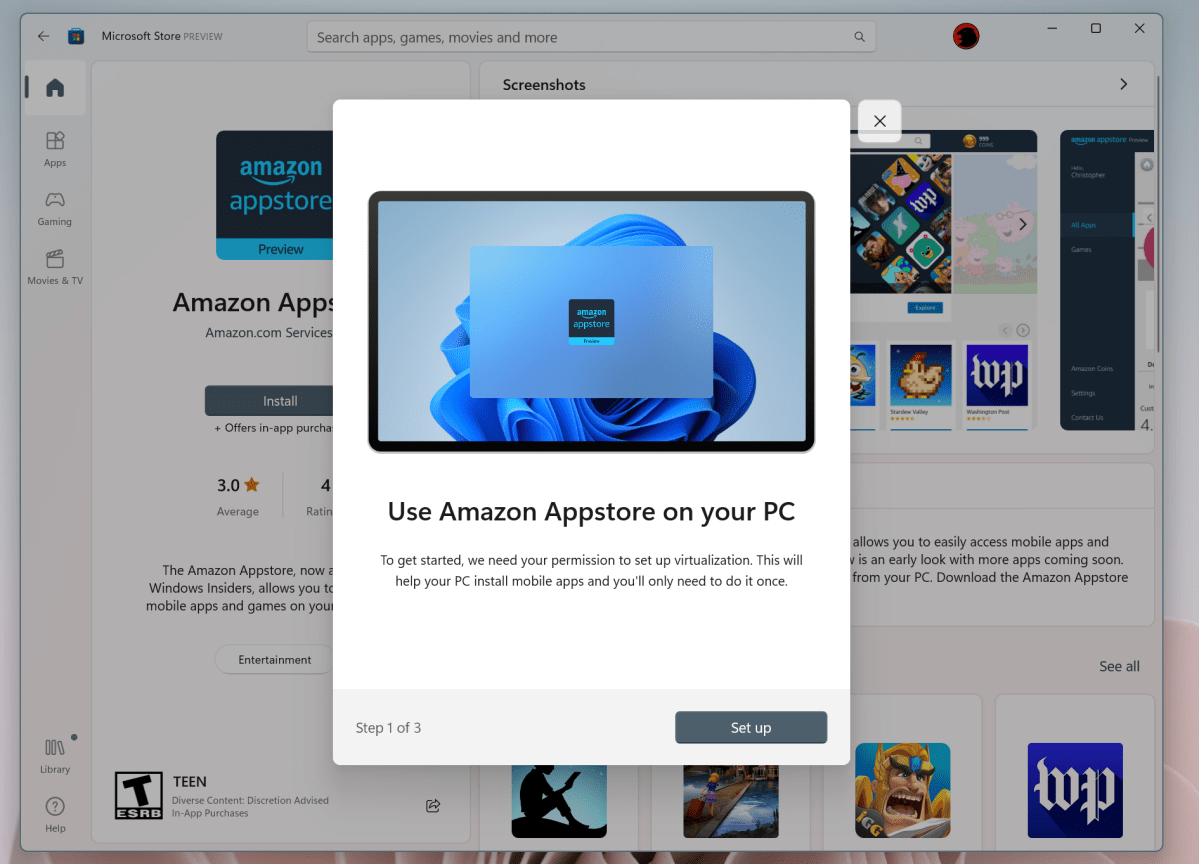
Throughout Windows 10’s life, Microsoft offered major feature updates in the spring and fall. With Windows 11, we expected those to move back to one update per year. But all bets are off after Tuesday’s release of a handful of new “experiences.” Microsoft will release new Windows 11 features when and if it wants.
Officially, Microsoft’s first Windows 11 feature update of 2022 is just a collection of “experiences,” according to chief product officer Panos Panay. They include tweaks to the Windows 11 taskbar, new Media Player and Notepad updates, and the first introduction of Android apps for Windows 11 PCs.
Microsoft chose to deliver those updates in different ways. The two apps were refreshed via the Microsoft Store, while the taskbar updates and Android apps got delivered in a cumulative update to Windows 11. Microsoft also quietly launched a new feature last week that adds account subscription information to the Windows 11 Settings menu via a collection of “experience packs”.
We know then, that Microsoft isn’t going to rely on a single channel to deliver updates to your PC. But Microsoft isn’t committing to a single time, either.
“As today’s release shows, we’re committed to delivering experiences into Windows 11 that enrich and inspire people’s lives,” Panay wrote. “Over time, you’ll see us release new features into Windows 11 for end users more frequently in addition to our annual update. We will leverage the variety of update mechanisms we have in place including servicing and Microsoft Store updates. Our goal is to deliver continuous innovation, providing you with the best experiences year-round.”
“Year-round.” For those of you who like Microsoft to leave well enough alone, that’s a little unsettling. (The unspoken implication is that people who prefer stability should be on Windows 10.) But for people who like a flood of new features, Windows 11 sounds like an operating system that Microsoft intends to constantly, consistently update — and not just the Windows Insider beta channels, either.

Amazon apps just got pushed to Windows 11 as a new ‘experience.’
Amazon apps just got pushed to Windows 11 as a new ‘experience.’
Mark Hachman / IDG
Amazon apps just got pushed to Windows 11 as a new ‘experience.’
Mark Hachman / IDG
Mark Hachman / IDG
If you look to Panay’s language as a guide, there’s even more to come. “We will continue to listen to your feedback and bring new experiences to life on Windows 11,” Panay said. “As we shared earlier this month, we’ll leverage the incredible community of Windows Insiders to incubate new ideas and put more emphasis on trying out different concepts with our features and services.”
Here’s one possible interpretation for that subtext: Microsoft is going to continue to use the Insider program to try out new “concepts” that may never see the light of day. That’s been the traditional role of the Insider Dev Channel. But with various teams working on various apps and services, and unfettered by the need to push out new features or fixes on a set schedule, that also may mean that new features may roll out on a faster pace. There are obvious issues — corporate IT managers must be going pale at the implications that their operating environments could change suddenly — but consumers have to know that Microsoft is open to trying things, and if it screws up (like omitting the clock from the taskbar) that it can fix it.
Windows 10’s early days offered a dynamic, energetic give-and-take between user and developer, which staled quickly during the last few Windows 10 feature releases. We’ve called Windows 11 unnecessary, and that’s still a valid criticism. But you must applaud a Microsoft that’s willing to make Windows 11 relevant again, both functionally and creatively. On Tuesday, Microsoft committed to doing just that — and frequently.
Author: Mark Hachman, Senior Editor

As PCWorld’s senior editor, Mark focuses on Microsoft news and chip technology, among other beats. He has formerly written for PCMag, BYTE, Slashdot, eWEEK, and ReadWrite.
Recent stories by Mark Hachman:
Microsoft’s Copilot AI is stealing one of Midjourney’s best featuresMore workers are using AI, but they’re ashamed to admit itMicrosoft says it’s pausing Windows Copilot UI tests




